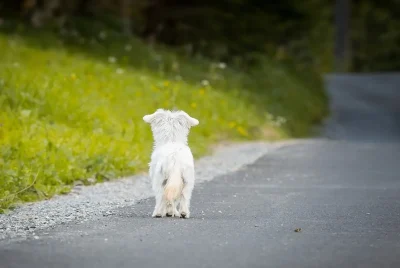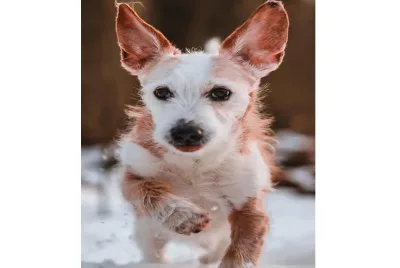Why Does My Dog Nibble on Me? The Science and Love Behind It
Why Does My Dog Nibble On Me? A Dog Parent’s Guide
Ah, the joys of dog parenting! Every little tail wag, every bark, and, yes, every nibble, is a window into the mysterious world of our canine companions. But, why does my dog nibble on me? This was a question that baffled me for the longest time.
The bond I share with my dog is unparalleled, and like any concerned dog parent, the first time my furball nibbled on me, my heart did a mini dance of confusion. Was it affection, or was I looking at a potential health concern? The nibble mystery was upon me. Those furry cuddles, wagging tails, and those gentle eyes looking up at me – it’s pure love. But every so often, during our couch cuddles, there’s this gentle nibbling. Why does my dog nibble on me? As a dedicated dog parent enthusiast, I was compelled to uncover the meaning of this behavior.
The Science Behind Dog Nibbling
Dogs, like humans, are complex creatures with a vast array of emotions, instincts, and behaviors. From wagging tails to barking at the doorbell, every action has a rationale. When it comes to nibbling, many dog parents are left puzzled. However, understanding the roots of this behavior is key to deciphering the language of our canine companions.
In the wild, ancestral dogs, and even current-day wolves and foxes, use nibbling as a method of grooming. This behavior is especially prevalent among pack members and signifies trust and closeness. So, when your domesticated dog nibbles on you, it’s like they are harkening back to this instinctual behavior. But there’s more than just instinct at play. Past experiences play a role too. For example, a dog that has been positively reinforced for nibbling in the past might repeat the behavior, expecting praise or treats.
It’s a Love Language: How Dogs Express Affection
We humans have numerous ways to show our affection, be it through words, actions, or physical touch. Dogs, on the other hand, have developed their own set of gestures to convey their feelings. From a wagging tail to a playful bark, every little gesture holds meaning. Nibbling, in many instances, is their way of expressing a deep sense of affection and closeness.
Imagine those times when you’re engrossed in a book or a TV show, and your dog comes over, gently nibbling at your fingers or toes. It’s as if they’re trying to get your attention, saying, “Hey, I’m here, and I adore you!” Moreover, nibbling also has a tactile component. The sensation of your skin or clothes under their teeth, combined with your scent, offers them comfort. It’s similar to the way we might find solace in hugging a loved one or holding their hand. Just as a child might tug at their parent’s shirt for attention, dogs use nibbling as their own version of a gentle nudge, a reminder of the bond that the two of you share.
Possible Health Concerns Behind the Nibbling
While most nibbles are harmless, it’s crucial to note any accompanying symptoms. Persistent nibbling at one spot? It might be time for a vet visit.
Oral Health Issues: Just like we might chew on something when a tooth aches, dogs might nibble when there’s something bothering their gums or teeth. Regular dental check-ups are a must!
Skin or Fur Concerns: Sometimes, the nibbling isn’t on you. If your dog is constantly nibbling at their own paws or body, it could indicate a skin issue. Regular grooming and vet visits can help in catching these early.
Dogs and Their Emotions: Unpacking Their Feelings
Nibbling During Playtimes: Distinguishing Playful Bites from Harmful Ones
Dogs often mouth and nibble during play. It’s essential to distinguish between playful, gentle nibbles and more aggressive bites. Play sessions can end in gentle nibbles on fingers. It’s just their way of engaging and sharing their excitement. Setting boundaries is key.
Stress or Anxiety Nibbling: Signs to Watch Out For
Dogs too have stressful days. If your dog starts nibbling post a loud noise or in a new environment, it’s likely their way of coping. Persistent, obsessive nibbling can sometimes be an indication of underlying stress or anxiety. Changes in the environment, new additions to the family, or past traumas can be triggers.
Addressing and Redirecting the Nibble Behavior
Navigating the intricate world of canine behavior requires patience and understanding. Just as we have unique quirks and tendencies, our four-legged friends exhibit behaviors – like nibbling – that can sometimes perplex their human companions. Addressing and curbing this nibbling behavior isn’t merely about discipline; it’s also about understanding the roots and triggers of the action. Is it a form of affection, or perhaps a sign of anxiety? Deciphering this is the first step towards a solution.
Training and Positive Reinforcement: Tips for Curbing the Nibbling
It’s essential to approach a dog’s nibbling habit with positive reinforcement techniques, rather than punitive measures. When dogs receive negative feedback or punishment, it can often exacerbate the behavior or lead to other unwanted behaviors. Instead, positive reinforcement focuses on rewarding the behavior you want to see, rather than punishing the behavior you don’t. For instance, if your dog starts to nibble, offering them a chew toy instead and praising them when they take the toy can reinforce the idea that chewing the toy is a more appropriate outlet for their nibbling urges.
The Power of Distraction & Positive Reinforcement
The age-old saying, “an idle mind is the devil’s playground,” can sometimes hold for our pets. When dogs are bored or have excess energy, they might resort to behaviors like nibbling. This is where the power of distraction comes in. Having an arsenal of toys, chewable items, or interactive games can divert their attention from nibbling on you or your belongings. Whenever they choose the toy over nibbling, reinforce this choice with a treat or verbal praise. Over time, with consistent redirection and positive reinforcement, the dog will naturally gravitate towards the desired behavior. Remember, patience and consistency are the keys to reshaping and redirecting any canine behavior.
When to Seek Professional Help: Recognizing when it’s more than just a habit
Sometimes, it’s essential to get a professional’s view. If the nibbling seems aggressive, obsessive, or linked to a health issue, don’t hesitate to consult a vet or dog behaviorist.
Conclusion: Navigating the Nibbles with Understanding
Embracing the journey of understanding my dog’s behavior has been rewarding. As dog parents, our furry pals look to us for comfort and understanding. Understanding the ‘why’ behind the nibble has not only strengthened my bond with my dog but has also enabled me to ensure their well-being. Remember, every behavior is a form of communication. The question is, are you listening? It’s our job to be there, one nibble at a time.
FAQs
Q1: Why does my dog nibble on me during playtimes?
A: It’s often their way of engaging and interacting.
Q2: Why does my dog nibble on me after meals?
A: Dogs often groom or show affection post meals. It’s their way of sharing the love.
Q3: Should I be concerned if the nibbling is frequent?
A: Keep an eye out for any accompanying symptoms like redness or excessive scratching. If unsure, always consult a vet.
Q4: How do I differentiate between playful and harmful nibbling?
A: Playful nibbling is often light and happens during play. Aggressive nibbling can be harder and more persistent.
Q5: Why does my dog nibble on me but not on other family members?
A: Each dog has a unique way of showing affection. They might have different behaviors for different family members based on their bond.




